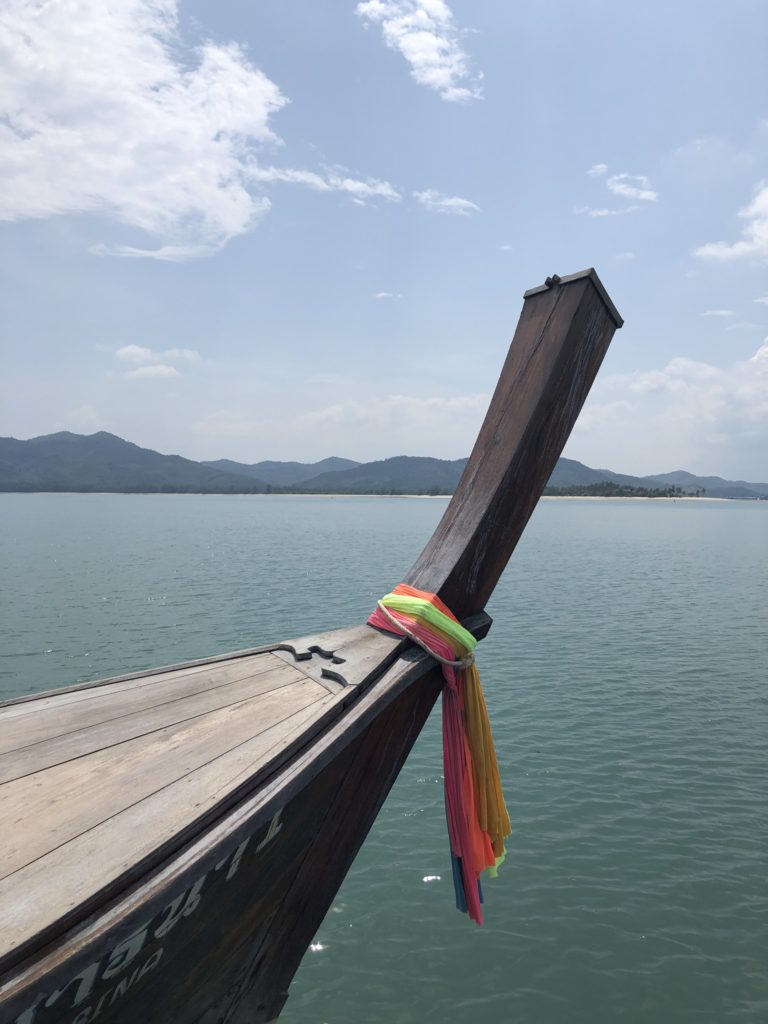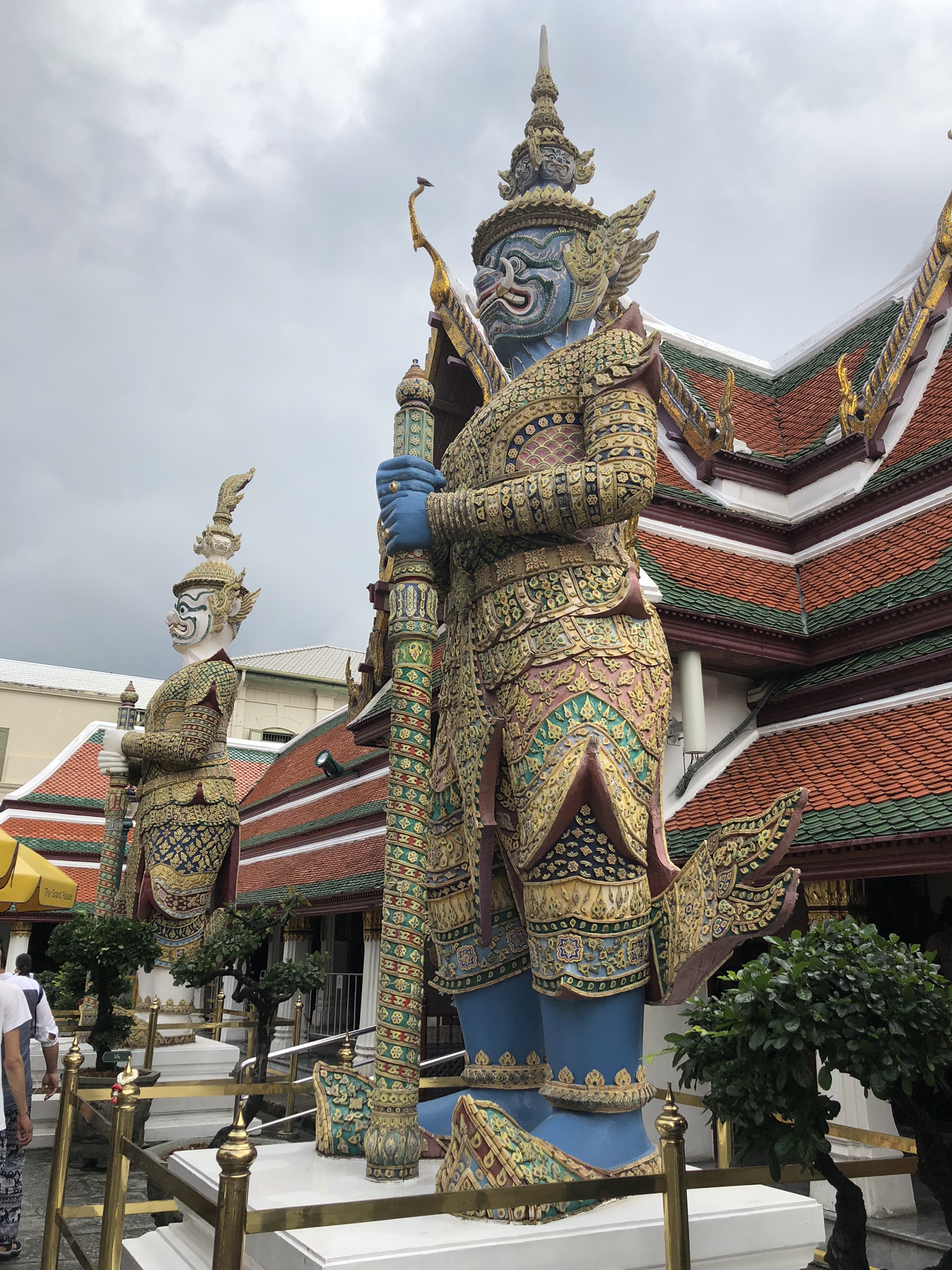One year ago I had just returned from a trip to Thailand and Cambodia with a group from my church. While we were there, we were able to visit a preschool supported by Christians in Thailand and also help teach English classes at a senior citizen’s center and school. In addition to those activities, we saw some amazing things. Our journey started in Bangkok, and ended in Phnom Penh Cambodia. This post details some of the most noteworthy places we visited.
The Royal Palace, Bangkok, Thailand
The Grand Palace complex consists of the former royal residence and throne halls of the Thai royal family, government buildings and temples. The buildings have ornate detail and craftsmanship at a level that rivals Versailles. King Rama I began construction of the palace in 1782 after the old capital at Ayutthaya had been destroyed by the Burmese. The palace complex covers an area of over 53 acres within its walls. The most impactful thing was seeing the variety and beauty of Thai architecture and gaining a better understanding of a culture that is so foreign to my own.
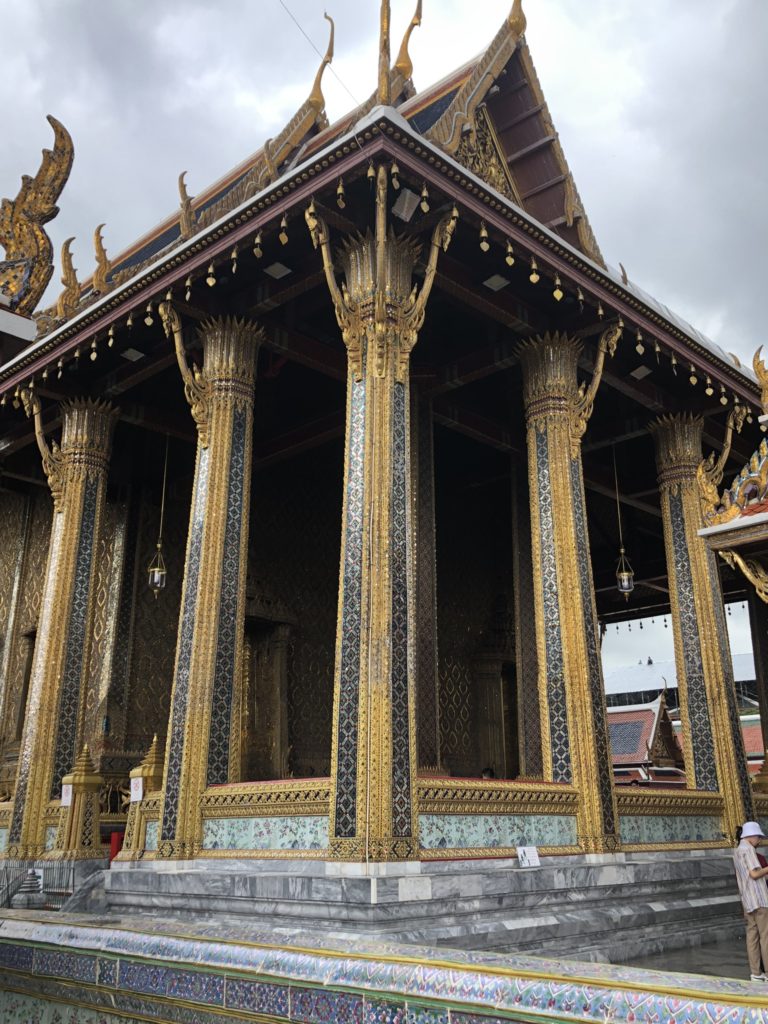
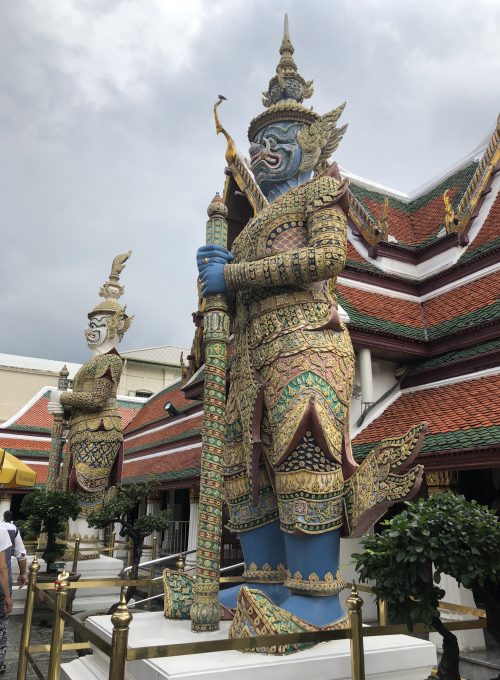
You enter through the elephant-sized Viseschaisri Gate and walk with the crowd toward the ticket booth. At the beginning of the tour you walk down an alley towards a courtyard where you see two imposing demon statues guarding the Temple of the Emerald Buddha. Look to the left, and you cannot miss the shiny golden stupa called Phra Siratana Chedi. It was erected in 1855 by King Rama IV, and the gold tiles were added later by Rama V. The golden chedi is so striking, but you see all of these other beautiful buildings with all different styles of architecture and colors. The Buddhist Library has columns all around and mother-of-pearl inlaid doors and is Javanese in style. The Royal Pantheon is built in the Thai-Khmer style. Don’t miss the model of Angor Wat, which is especially interesting to see if you cannot actually visit Angor Wat. The covered gallery which surrounds the buildings in the temple complex has beautiful paintings all along its wall that tell the epic story of Ramakien, the Thai version of the Indian Ramayana story. The largest building in the temple complex area is the Temple of the Emerald Buddha. It houses the 15th century solid jade Buddha image that sits high on a gilded throne. Visitors can enter the ornate room, but must remove shoes. We also walked in front of the royal residence building, Chakri Maha Prasat Hall, but did not have time to go inside. It was built in 1877 in Italianate style but has a Thai style roof. To truly appreciate what you are seeing, I’d recommend renting an audio guide or hiring a guide to give you a tour. We had a local in our group that could explain the significance and meanings of the stupas and the rooflines with the birds at the top chasing the dragon down, symbolizing yin and yang.
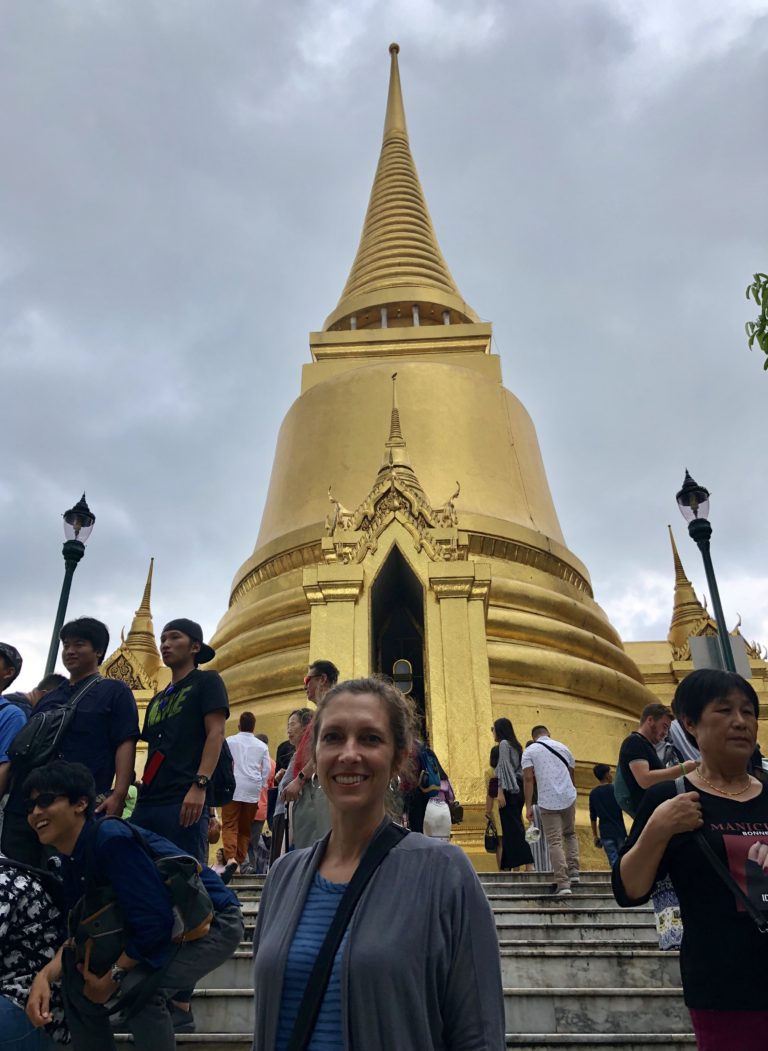
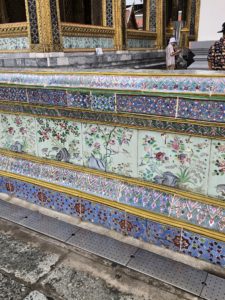
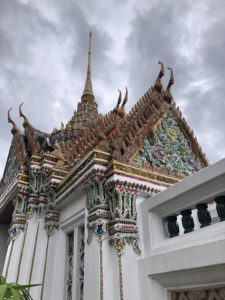
It is a good idea check the Royal Grand Palace website for practical information prior to your visit. You will want to modestly cover your arms and shoulders. Men must wear long pants, and women will need to wear skirts below the knee. Closed toed shoes that slip on and off are advised, but no flip flops. The complex is open 8:30am to 3:30pm seven days a week and entry costs 500 baht. Be aware that you must go through security, and do not take photos in security line areas or of military personnel.
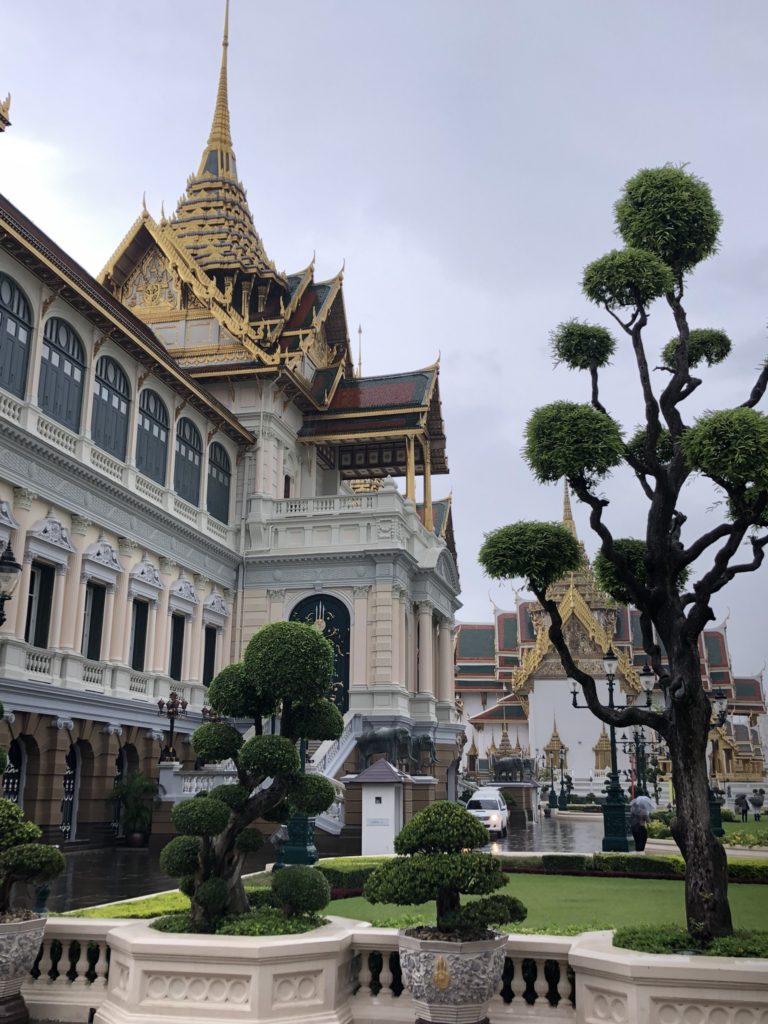
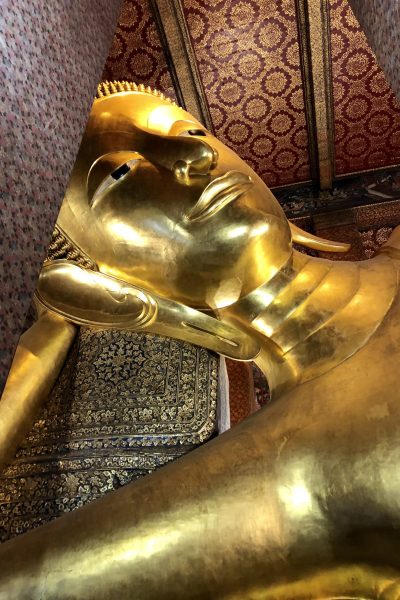
Wat Pho - Temple of the Reclining Buddha
Once we exited the temple complex, we went around the block to Wat Pho—Temple of the Reclining Buddha, which sits directly south of the palace. The temple is within a working wat complex that also houses a Thai massage school. To see the famous statue, you must take your shoes off to enter the temple building where he lies. You walk counter clockwise around the large reclining Buddha statue to get a good look. He is covered in gold leaf and lies 46 meters long and 15 meters tall, taking up the length on the building in which he reclines. If his head lay at the goal post of a football field, his feet would almost touch the 50 yard line. Along the wall behind the Buddha there are bronze buckets in which pilgrims can drop coins in order to make “merit” or good luck. One can purchase a handful of coins that are worth fractions of a penny each in order to spread out the coins among the buckets. As a Christian, I did not do this, but as I walked along to observe, the coins clinking into the buckets filled the room with a pretty ringing sound.
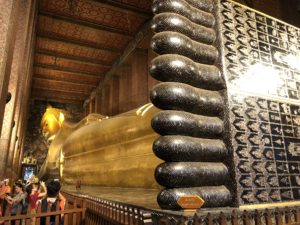
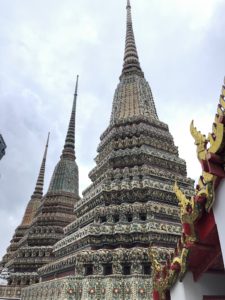
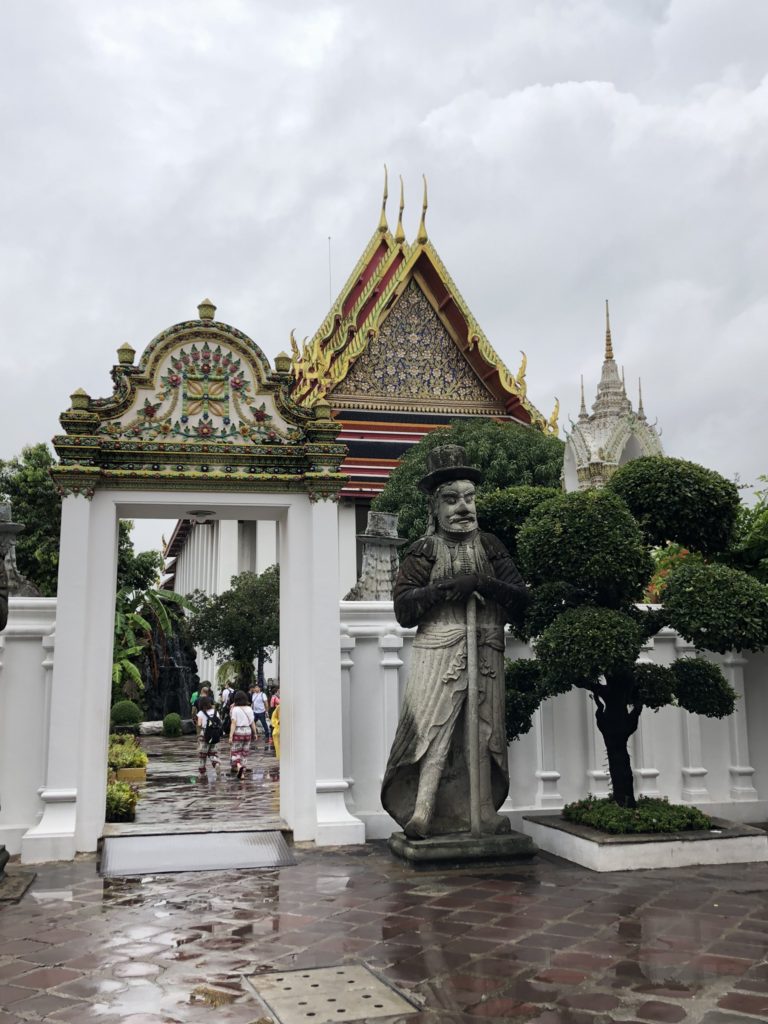
Water Taxi to Asiatique on the Chao Praya River
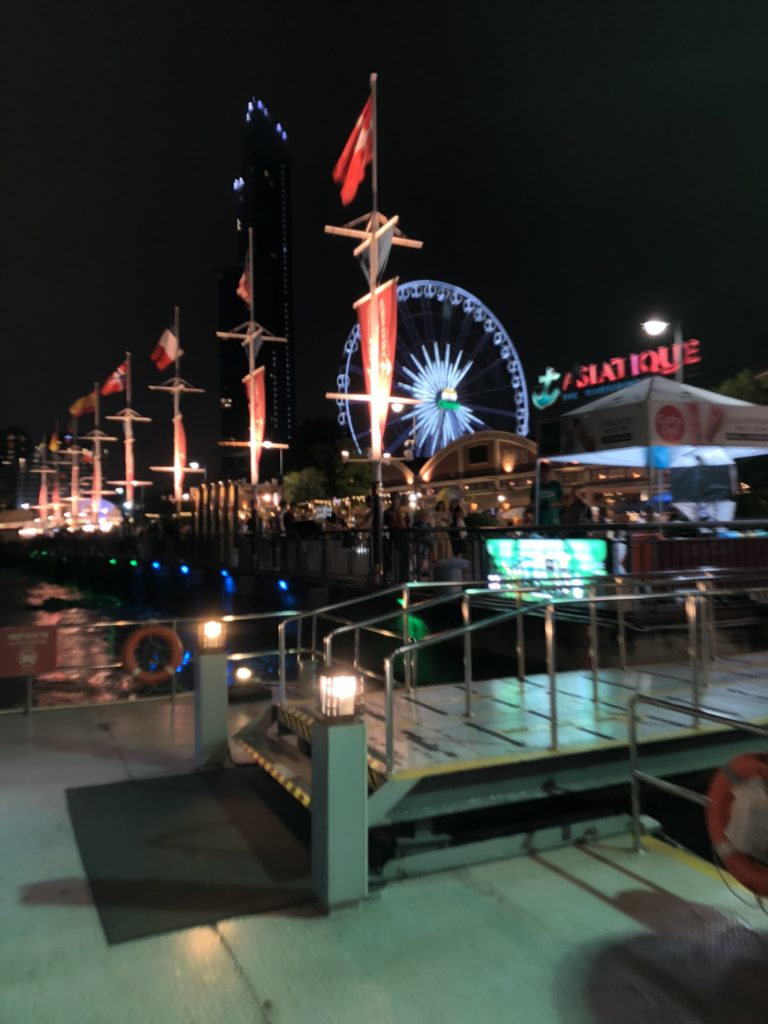
We took the river taxi from Sathorn Pier to the Asiatique riverfront market. Riding in a boat on the Chao Praya River is tumultuous fun. The turbulent river stays brown and busy from hundreds of boats that travel up and down at any given time. However, one of the best ways to see Bangkok is from the river. You see shanties, high rise luxury hotels and historic wats all in one scenic view. We rode to the market in the afternoon, but when we rode back from the market at night, we saw the beautiful lights of Bangkok from the water. The river shuttle is free and boats run every 15 minutes between 4pm and 11pm.
The Asiatique riverfront market is a somewhat touristy open air mall with restaurants, shopping and entertainment. It was built in an old warehouse district. It has hundreds of different restaurants, shops and food kiosks. There is even a Ferris wheel at one end and a nice boardwalk along the river. The restaurants are a bit more tourist oriented than what you will find in other places, but you can still find good Thai food. There are also multiple chain restaurants and food kiosks such as DQ. The Texans in our group thought it was funny to see a DQ, apparently they are not just a Texas thing! In fact, there are other chains you see in Thailand even more often than you see in the United States—KFC and 7-11—they are everywhere!
Phang Nga Bay
The most incredible natural beauty we saw was at Phang Nga Bay, just north of the island of Phuket. This is an area that has picture postcard limestone mountains that poke jaggedly out of the ocean. It is an other-worldly look that has been used as a backdrop in movies such as James Bond movies. We saw this area from the Samet Nangshe Viewpoint on the mainland. At the end of a windy rural road you park and pay to ride up a windy steep road to the viewpoint where there is a restaurant and hotel. It was a great place to go just to ride up and sit and sip Thai Tea for a while and soak up the view. There are actually a few restaurants and accommodation popping up near the viewpoint, and I’m afraid that it will soon become very commercialized. I was with our group and had limited time, but a better way to see Phang Nga bay would be by boat tour. However, I am thankful to have seen it at all! It is one of the most strikingly beautiful places on earth.
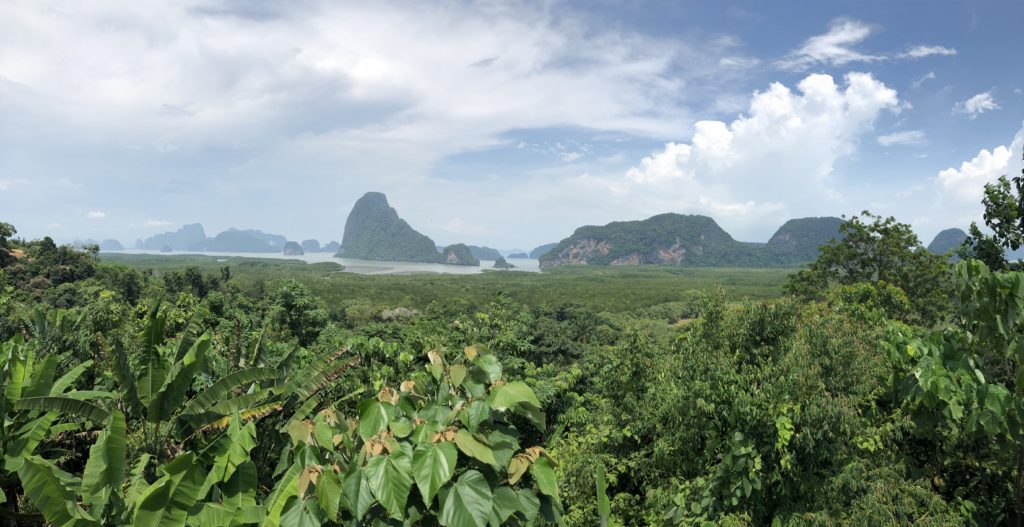
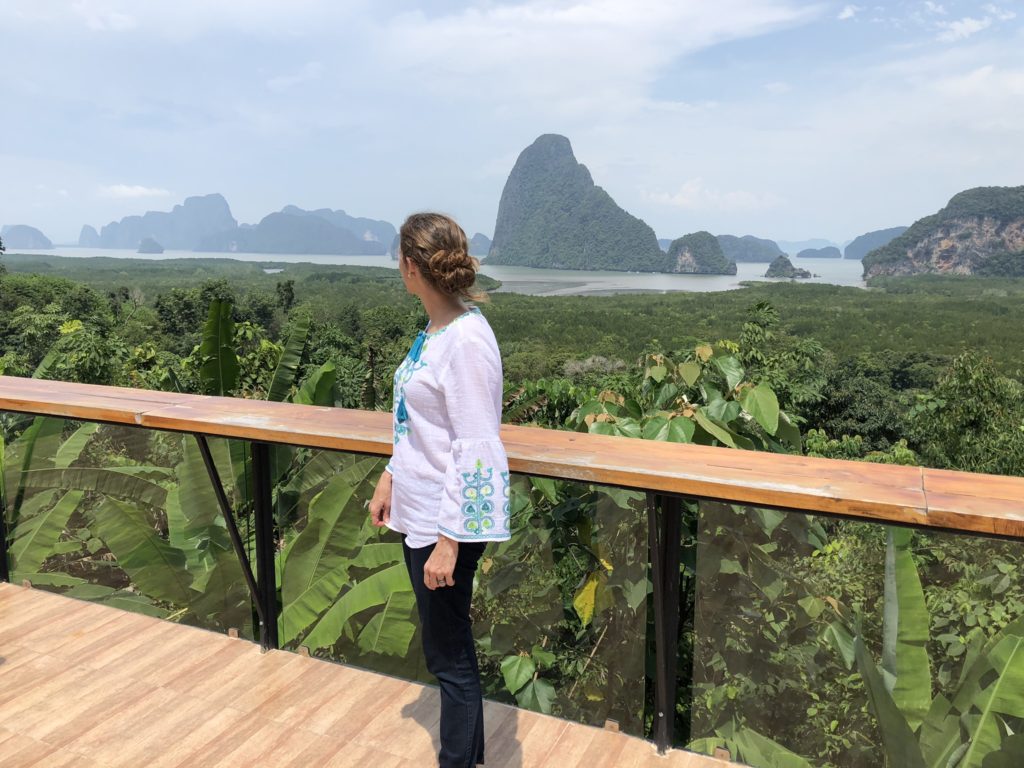
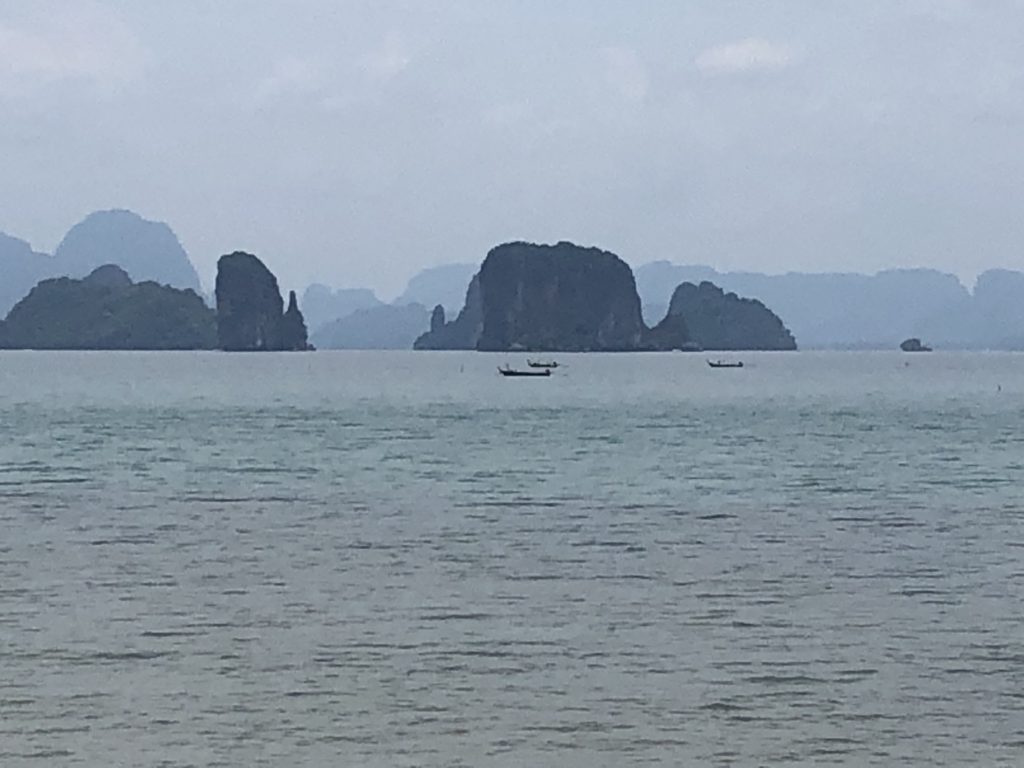
Ko Yao Noi Island, Thailand
Two islands lie just to the east of Phuket: Ko Yao Yai and Ko Yao Noi. We visited Ko Yao Noi, the northernmost of the two islands, which is very untouristed and lies in the south end of Phang Nga Bay. The population is over 90% Muslim, many of whom are rice farmers or fishermen. It appears to be a very safe and sleepy little island. We took a boat from the Bang Rong pier on Phuket to the Manoh Pier on Ko Yao Noi. There are several restaurants, coffee shops and a few accommodations on the island. Further around the island at the Tha Khao Pier are a couple of gift shops, one where they make Batik by hand and another across the street that is a clothing boutique. The island has beautiful beaches with views of more limestone pinnacles that rise out of the sea.
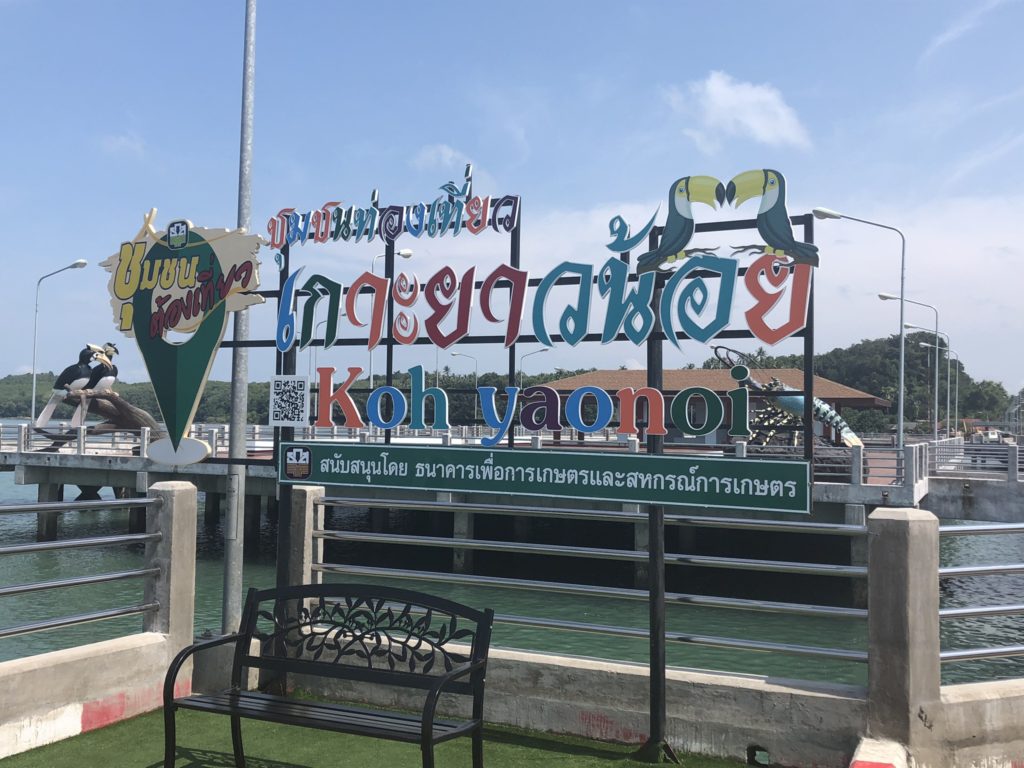
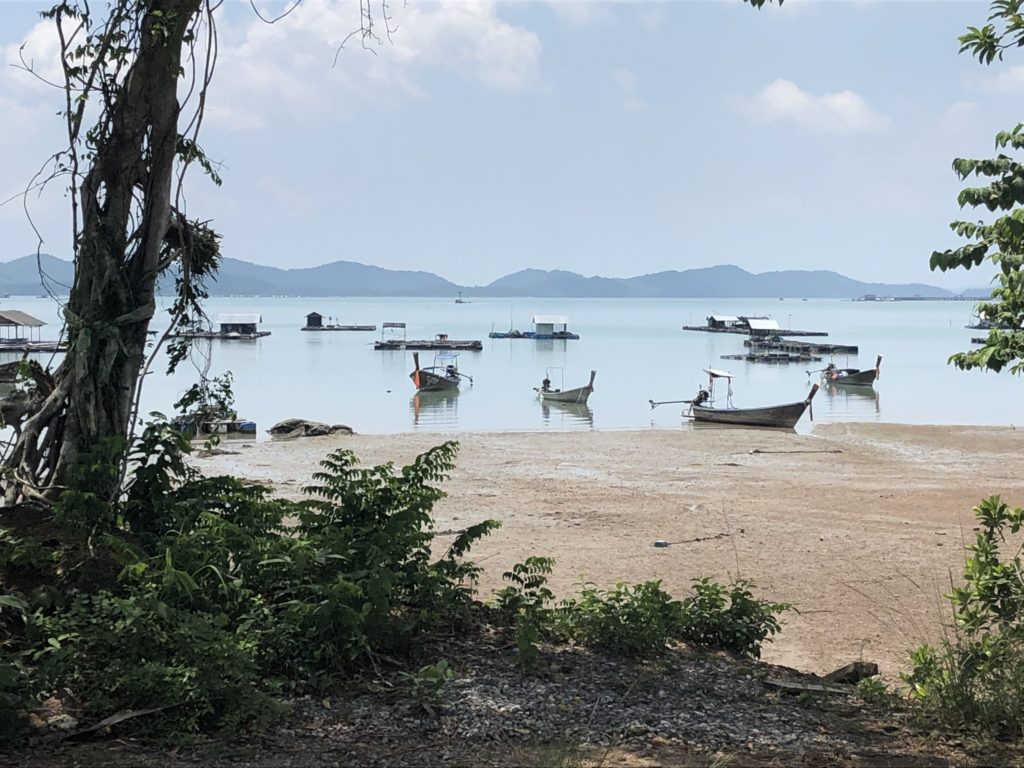
Phnom Penh, Cambodia
If visiting Phnom Penh, there are a few highlights you should see while you are there. The riverfront area has the National Museum of Cambodia, the Royal Palace, and pretty parks and public squares. We didn’t have time to tour through the museum or the palace, but we did enjoy walking around the area and walking down the wide paved riverside promenade. The riverside path runs north from the Chaktomuk Conference Center, an example of Khmer modern architecture. The promenade runs along the river adjacent to the Royal Palace and even had a market set up along the river the day we were there. The area really seems to be the heart and soul of Phnom Pehn where families and friends congregate on the weekends to stroll and hang out.
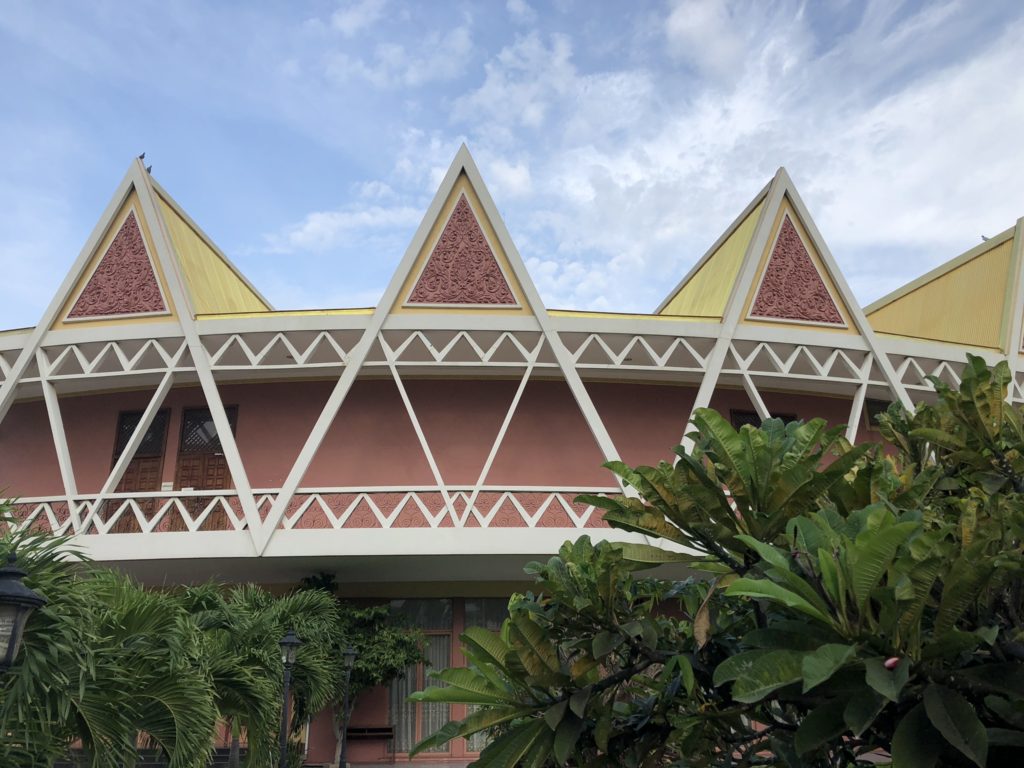
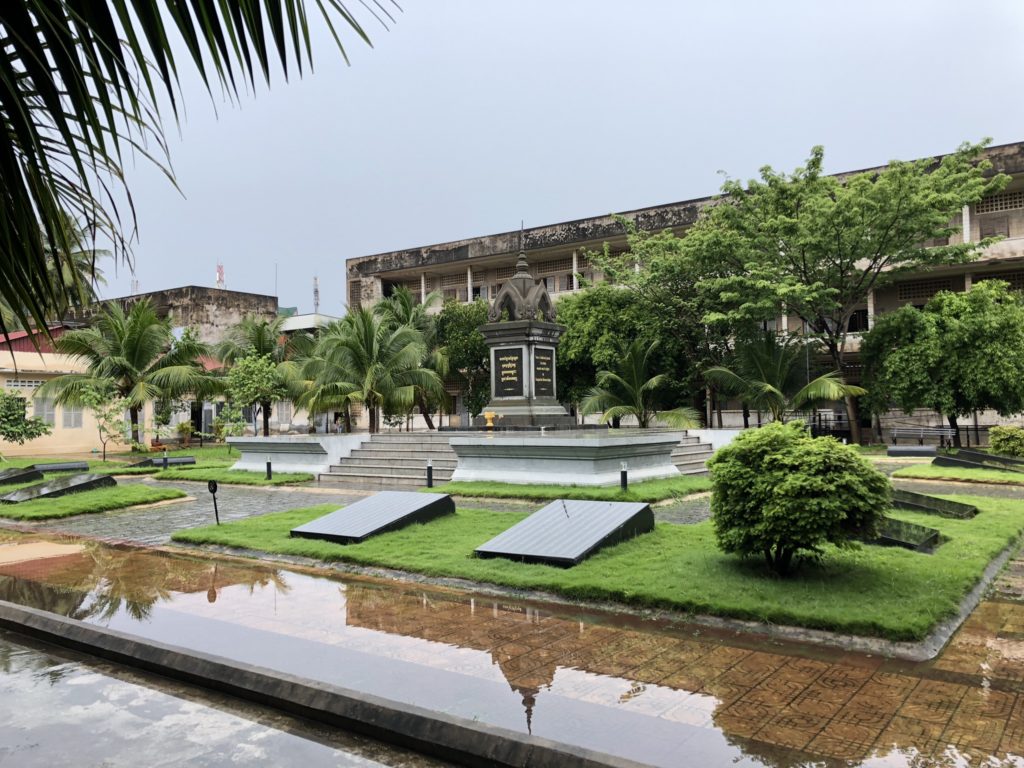
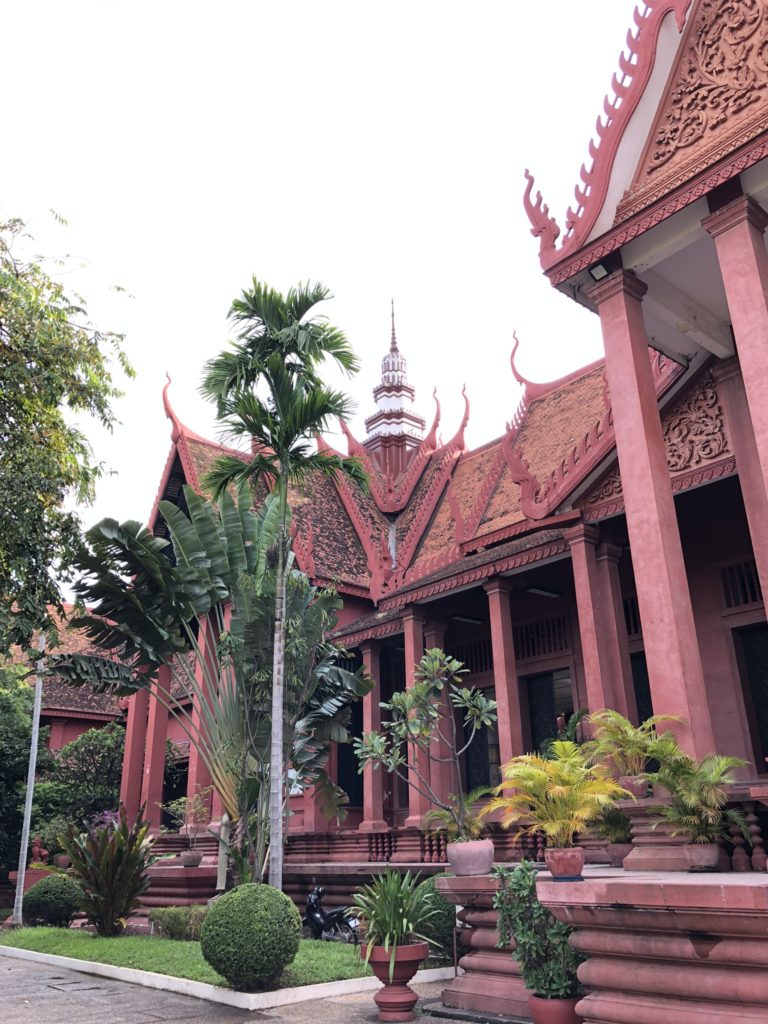
It is important to understand what happened in Cambodia only a generation ago. You won’t have a complete picture of Phnom Penh if you don’t visit either the Toul Sleng Genocide Museum or the Choeung Ek Genocidal Center on the south edge of town. We visited the Toul Sleng Genocide Museum. This museum complex was a high school before the Khmer Rouge took power in 1975. When they moved in it became a detention center where over 18,000 people were tortured and killed. It is a very somber place, but essential to visit in order to understand how the Khmer Rouge came to power and how its legacy impacts the Cambodian people even today. The museum has an audio tour in several languages, including English, that I’d highly recommend. You will want to reserve at least two hours to tour the museum.
It would be fun to visit a market while in Phnom Penh, and there are several: the Night Market near the river, the large indoor Central Market, and the Russian Market, which we visited. It is so named because Russian expats lived nearby and shopped there in the 1980s. The Russian Market has clothing and “dry goods” but also a food and produce area as well. We actually stayed near the Russian Market and there are many international restaurants and boutique hotels in the area. We enjoyed our stay at the Double Leaf Boutique Hotel, and nearby restaurant choices were Indian, Mexican, Italian and American. We even ate at Brooklyn Pizza, which was owned by an Aussie.
Tips:
If this is your first trip to Southeast Asia, hire a guide or go with a group so that language is not such a barrier. It is certainly fine to strike out on your own, but English is not widely spoken.
In the cities, you will need to watch where you walk, as the traffic is a bit crazy.
Drink bottled water.
Also, if your travel to do volunteer work, do research ahead of time in order to help, not harm.
“Like,” share and comment!
